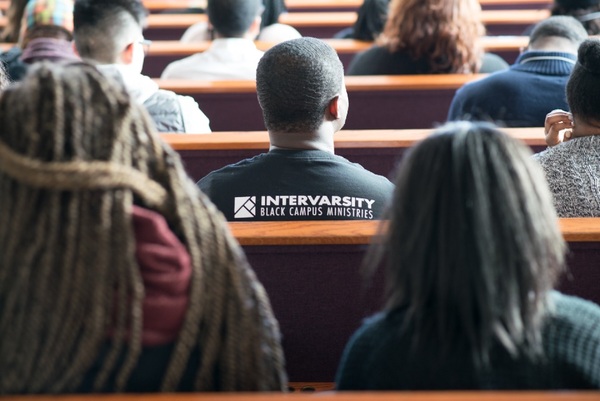
–>
August 20, 2022
According to an article in the Chronicle of Higher Education, Black student enrollment in American colleges and universities has declined dramatically in the past ten years, 24 percent in fact, from 2.5 million students in 2010 to 1.9 million in 2020.
‘); googletag.cmd.push(function () { googletag.display(‘div-gpt-ad-1609268089992-0’); }); }
Prior to that ten-year period, argues Chronicle reporter Oyin Adedoyin, “The story of Black college students in the USA was a narrative of success.” Judging only by numbers, Adedoyin is right. Black population on campus grew nine-fold from 1966 to 2010. The decline since 2010 puzzles administrators given the thousands of DEI officers they have hired and the myriad enticements they have offered to Black students.
Although Adedoyin offers no overarching reason for the enrollment drop, the reader willing to wade through her tortured logic and butchered prose may find an explanation that Adedoyin herself did not seem to notice.
The students and staff she interviews, like so many other campus activists in recent years, speak of college life as affectionately as Solzhenitsyn spoke of life in the gulags. This is not a good marketing strategy, “Every single day looks like a combat to be acknowledged,” Adedoyin writes, summing up what she hears. A former prof elaborates, “We’re put into these white areas, and we really feel marginalization and lack of help.”
‘); googletag.cmd.push(function () { googletag.display(‘div-gpt-ad-1609270365559-0’); }); }
Adds Skye Jackson, an activist at Brown University, “It simply is exhausting to stroll by way of the hallways and really feel like you’ll be able to’t (sic) be who you actually are because of structural racist programs put in place in opposition to college students of colour (sic).”
Then there is the question of whether all this struggle and stress is worth the cost, however reduced that cost is for students of color. “Affordability is a good barrier for African People,” a Wright State alum gripes. “And, after all, we’re all the time the final employed, first fired nonetheless.”
The real tragedy of the civil rights movement is its failure to convince African Americans that they have made any progress. Progress is anathema to the “antiracist” cartel. Its disciples make their living scaring Blacks into paranoia and guilt-tripping Whites into subsidization. A college graduate who believes in 2022 that Blacks are the last hired and first fired might just as well believe that the sun rises in the west and sets in the east. Her beliefs are that divorced from reality. An honest conversation over coffee with an HR executive — admittedly hard to come by — could disabuse any sane person of that notion before the coffee cools.
If Adedoyin had a shred of self-awareness, she would understand that her own career is a testament to the Kafkaesque state of today’s civil rights movement. In the way of background, the presumed race blindness of the 1964 Civil Rights Act lasted no more than a year, if that. In September 1965, President Lyndon Johnson gave the new ethos its official name with executive order 11246. The order entrusted the Secretary of Labor with the power “to take affirmative action to ensure equal opportunity based on race, color, religion, and national origin.” Over time affirmative action evolved into “diversity” and diversity into “DEI,” diversity, equity, and inclusion, the Frankenstein’s monster of the civil rights movement.
That monster has inarguably greased the skids for Adedoyin. I do not write the following to embarrass her, but to embarrass her employer, the Chronicle of Higher Education, her incubator, the New York Times Student Journalism Institute, and her alma mater, Morgan State University. I will let the reader be the judge of the following sentences, problem words and commentary italicized:
However from 2010 to 2020, as general school enrollments fell, the variety of Black college students on campuses fell much more sharply, to 1.9 million.
‘); googletag.cmd.push(function () { googletag.display(‘div-gpt-ad-1609268078422-0’); }); } if (publir_show_ads) { document.write(“
Whereas some directors have tried, within the wake of George Floyd’s homicide, to combat racism on campuses… they  haven’t but stanched the general decline in enrollment.
haven’t but stanched the general decline in enrollment.
At Wright State College, outdoors Dayton, Ohio…
Right this moment, Black college students make up round 10 % of the campus’s enrollment.
The initiative works carefully with the Pupil Success Heart… [No, people work carefully.]
When she pursued a grasp’s diploma there, in 2000, she didn’t sense a robust Black neighborhood on campus. [No idea where “grasp” came from.]
That type of monetary path is now not attainable, she mentioned, with tuition and different prices of attendance on the rise. [Huh?]
Right this moment’s boundaries are subtler and fewer overtly racist…
Coping with them requires knowledge, analysis, and a multipronged strategy, advocates say. [Apples and oranges.]
“We’re put into these white areas, and we really feel marginalization and lack of help,” he mentioned. “After some time, you begin to surprise, ‘Is it actually price it?’” [I am hoping this is a misquote.]
The Chronicle of Higher Education is the Bible of the academic community. I receive a daily mailer from the publication. On Friday, Adedoyin’s “What Happened to Black Enrollment?” is its featured article. (Since the article is pay walled, I linked to another site). In addition to being first hired and last fired, Black journalists are apparently the least edited. Heads should roll at the Chronicle over this, but they won’t. The head rollers risk their own heads.
Adedoyin was one of four aspiring journalists whose photos were featured on the New York Times Student Journalism Institute 2021 site. All four are female. As best as I can gauge from names and faces, one is Hispanic, one is Chinese, one is a Filipina, and Adedoyin is Black. I would like to cut her some slack as an ESL student, but she lists her hometown as Baltimore. Here is what Adedoyin hopes to accomplish.
I want to tell the stories with impact and compassion that I never really saw much of growing up. I want to hold those in power accountable and shed light on underrepresented and underreported, marginalized communities and hopefully inspire some kind of change.
And there, my friends, is the future of journalism, a future that will assure that Blacks remain scared, Whites remain guilty, and liberals remain ignorant.
Jack Cashill’s newest book, Untenable: The Real Reason Ethnic Whites Left America’s Cities, will be published in the near future.
Image: Kyle VanEtten
<!– if(page_width_onload <= 479) { document.write("
“); googletag.cmd.push(function() { googletag.display(‘div-gpt-ad-1345489840937-4’); }); } –> If you experience technical problems, please write to [email protected]
FOLLOW US ON
<!–
–>
<!– _qoptions={ qacct:”p-9bKF-NgTuSFM6″ }; ![]() –> <!—-> <!– var addthis_share = { email_template: “new_template” } –>
–> <!—-> <!– var addthis_share = { email_template: “new_template” } –>





